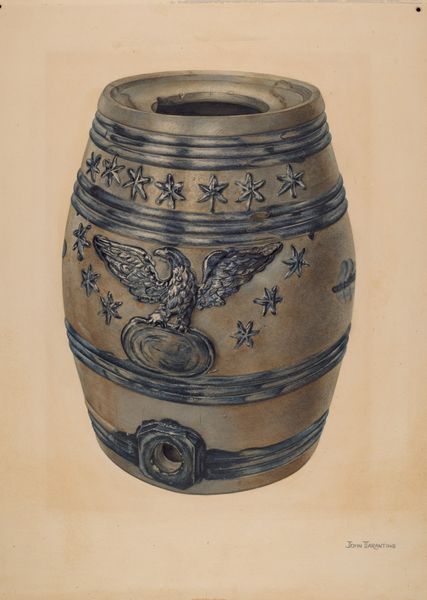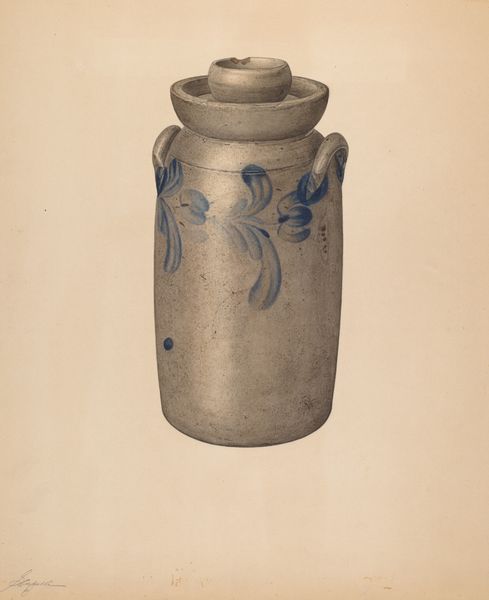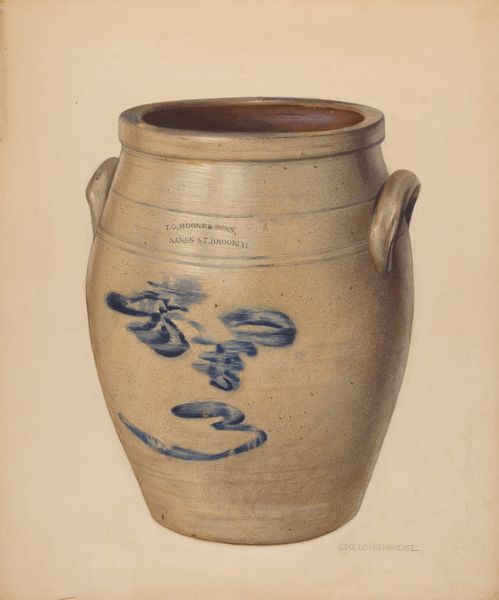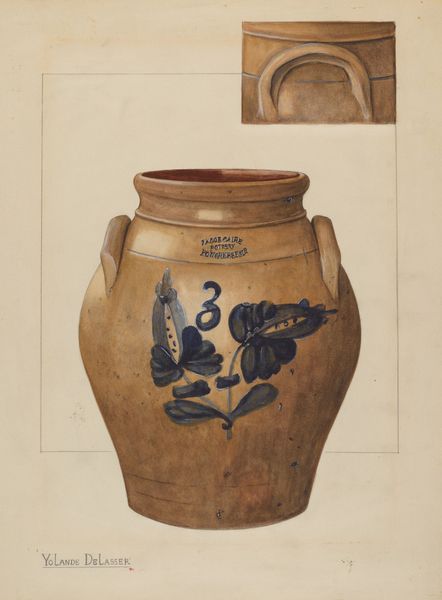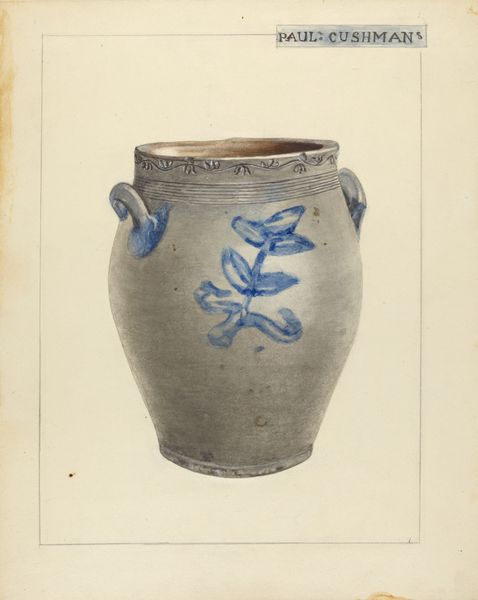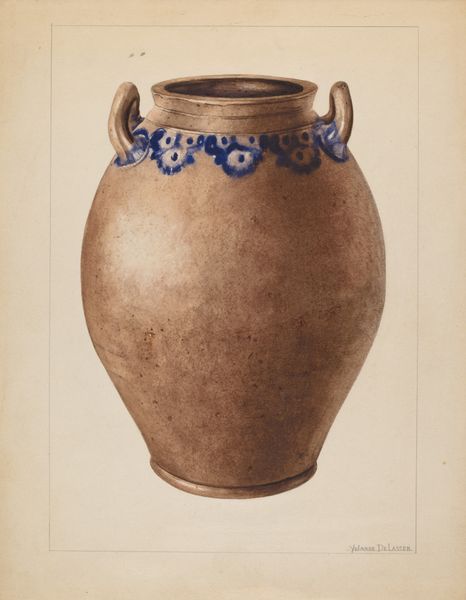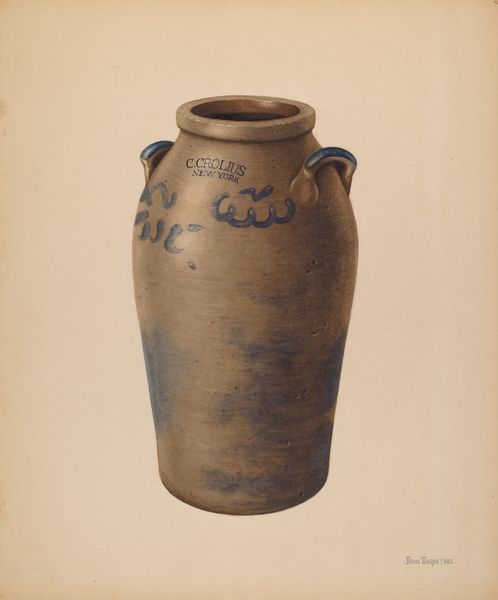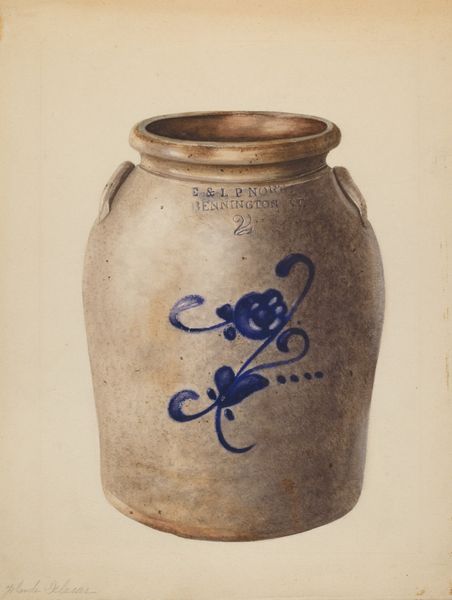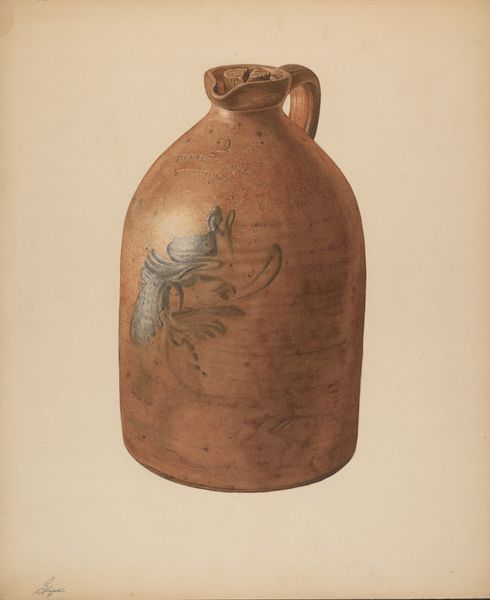
drawing, watercolor, earthenware
#
drawing
#
watercolor
#
earthenware
#
stoneware
#
folk-art
#
watercolour illustration
Dimensions: overall: 29.2 x 22.8 cm (11 1/2 x 9 in.) Original IAD Object: 8 1/4" High 4 1/4" Dia(base) 3" Dia
Copyright: National Gallery of Art: CC0 1.0
Editor: This is a watercolor and drawing of an earthenware jar, created around 1936 by John Dana. It’s interesting how a simple jar becomes a canvas. What imagery strikes you most? Curator: Immediately, I’m drawn to the repetition of imagery and motifs. The flower, the rooster, the bird–these aren't just decorative. Think of folk art as visual language. Each symbol carried meaning for its makers and users. The rooster, often associated with vigilance and pride, perhaps suggests an assertion of self or community identity. What might this earthenware jar, depicted so carefully, have contained? Was it practical or symbolic? Editor: Maybe it’s about preserving something, both physically within the jar, and culturally through the images? Curator: Precisely! Visual symbols speak to a deeper collective memory. What’s fascinating is how seemingly simple images accrue meaning over time and become woven into the fabric of cultural identity. Consider, also, the vessel itself. Jars store not only goods, but stories, memories, traditions... What happens when you start to think of it that way? Editor: It feels less like a drawing of an object, and more like a coded message, full of stories just waiting to be decoded! It really shifts the focus from the physical object to the cultural weight it carries. Curator: Absolutely! And that’s the enduring power of iconography, how objects like this can keep history and traditions alive across generations.
Comments
No comments
Be the first to comment and join the conversation on the ultimate creative platform.
